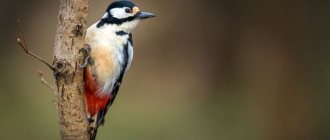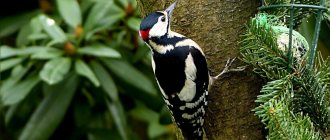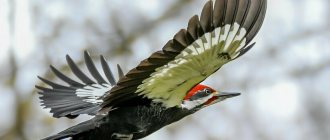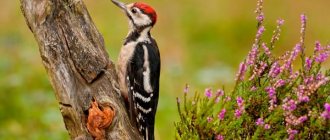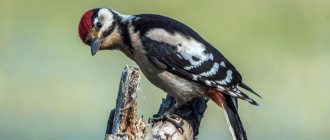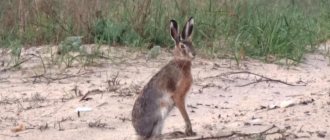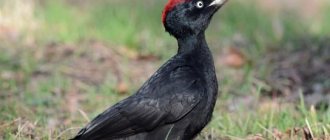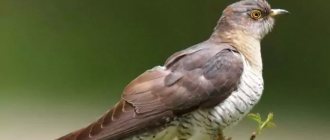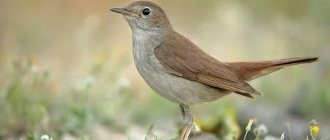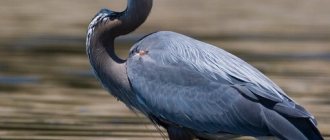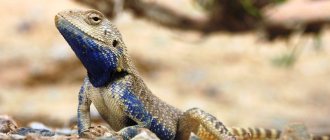Not a single forest can do without this bird. The loud and rhythmic sounds of a woodpecker's shot are heard throughout the entire area, this is especially noticeable in the spring. If you look closely at the trees, you can see it. This bird is not a shy one and sometimes flies to “make some noise” in gardens, trees under windows or telegraph poles. She is very remarkable and bright, it is impossible to confuse her with anyone else. But the species of woodpeckers may not be distinguishable at first glance. The Great Spotted Woodpecker is especially common in our country. Let's look at it in more detail.
Great spotted woodpecker: description
The fact that this bird is generally difficult to confuse with anyone else is primarily due to its specific appearance and method of obtaining food. The Great Spotted Woodpecker is often compared in size to the thrush; they are approximately the same. Its body length on average ranges from 22 to 27 centimeters; females are usually smaller than males. The weight of the bird is small - only 60-100 grams. It is not for nothing that the Great Spotted Woodpecker received such a name, as it has a very bright, contrasting plumage color in black and white and red (and sometimes pink) undertail.
Males and females can be distinguished by the color of the back of the head. All young individuals have a red cap on their heads; it disappears with age. The red spot on the back of the head remains only in males. The top of the head becomes black. The bird's cheeks, forehead, and belly are white; depending on the habitat, their shade can vary from bright and clean to beige or almost brown. The Great Spotted Woodpecker has a very decent wingspan, reaching almost half a meter (42-47 centimeters). It is also worth noting the shape of the tail. It is pointed (wedge-shaped) and has a medium length; very rigid, as it plays the role of support when the bird moves along the tree. The structure of the paw, typical of woodpeckers, is zygodactyl, that is, the two front fingers are opposed to the two back ones. The average lifespan of a bird is about 9 years.
Origin of the species and description
Photo: Spotted Woodpecker
The spotted woodpecker is one of the most extraordinary representatives of the woodpecker family. This bird with a unique appearance densely inhabits deciduous, mixed forests. The lifestyle of most woodpeckers is sedentary. However, individuals living on the northern periphery can migrate to nearby regions. Not only severe frosts, but also unfavorable feeding conditions make birds nomads.
Interesting fact: The woodpecker family today has about two hundred and twenty different species. The size of the birds ranges from fifteen to fifty-three centimeters. Spotted woodpeckers are one of the most numerous species.
You can recognize the spotted woodpecker by its so-called red cap, located on the parietal part of the head. This species includes from fourteen to twenty-six races. The subspecies taxonomy of the bird has not yet been thoroughly studied, so the exact number of subspecies cannot be determined. Among the most famous subspecies of spotted woodpeckers are: great sharp-winged, yellow-breasted, brown-fronted, Malaysian, Arabian, middle and great spotted woodpeckers.
Interesting fact: Woodpeckers are noisy animals. They are capable of hitting a tree at a phenomenal speed - 20-25 times per second. This is twice the maximum speed of the machine gun.
Spotted woodpeckers, like other numerous members of the woodpecker family, play an important role in forest ecology. They rid forests of pests and help small birds acquire nests. Woodpeckers hollow out the thick bark of a tree, leaving hollows for tits and flycatchers.
Great Spotted Woodpecker: Habitat
This is a very common bird with a wide habitat - from the Canary Islands to Kamchatka and Japan. Most often, birds lead a sedentary lifestyle, less often a nomadic one. The latter is mainly associated with habitats that are unfavorable in terms of food supply, so birds are forced to migrate (invasion) to neighboring regions. The Great Spotted Woodpecker (photo can be seen in the article) is very undemanding about its place of residence and takes root almost anywhere where trees grow - from taiga forests to city parks. The surprising thing is that the choice depends not only on the country in which the birds live, but even on the regions. Thus, in Siberia and the Urals, the woodpecker chooses coniferous and mixed forests, but with a predominance of pine trees, and in the north-west of the country it prefers pine forests and spruce forests.
Habitat
The Great Spotted Woodpecker's distribution area extends throughout almost the entire Palearctic. Some populations are found in Europe, Africa and the southern range of the Balkans. These birds are also found on some islands of the Mediterranean and Scandinavia. In Russia, Great Spotted Woodpeckers can be found on Sakhalin.
As a habitat, these representatives prefer to inhabit small islands with rich vegetation, as well as parks and gardens. Great spotted woodpeckers themselves are easily adapted to any type of biotope. The inhabitants of North Africa inhabited cedar forests, olive groves and various mixed forests. In Poland, great spotted woodpeckers are found in oak and alder groves and in some parks rich in old trees.
What does a woodpecker eat in summer?
Many people remember from school about the so-called forest orderlies. These include the wolf and woodpecker. The bird prefers to settle in forests where there are many old and rotten trees. Woodpeckers have a very varied diet. The predominance of plant or animal food in it depends on the season. It is noteworthy that males and females obtain food for themselves in different territories, and sometimes even in separate forests. The spring-summer diet mainly consists of insects and their larvae. First of all, these are, of course, various beetles, including those that feed on wood, as well as their larvae: longhorned beetles, bark beetles, stag beetles, weevils, ladybugs, golden beetles. The Great Spotted Woodpecker makes 130 beats per minute with its bill. This is quite a powerful force; not a single bug or worm will go unnoticed. The bird's diet also includes butterflies, including hairy ones, their caterpillars, aphids, and ants. The Great Spotted Woodpecker does not disdain carrion if given the opportunity. It was also found that sometimes these birds destroy the nests of small songbirds.
The Great Spotted Woodpecker is a tireless worker of the forest
Once again on our website there is a photo hunter, an expert on birds living in the vicinity of the city of Ozyory, Tatyana Lvovna Gvozdeva . This time her story is about the Great Spotted Woodpecker, which we have all probably seen more than once in our forest, but know little about it. Now, thanks to Tatyana Lvovna, we have the opportunity to fill this gap and learn a lot of interesting things about the woodpecker. (Site administration)
PS Any third-party use of copyright materials from this publication is possible only with the consent of the author.
Tatyana Lvovna Gvozdeva.
The Great Spotted Woodpecker is a tireless worker of the forest
Fans of forest walks can hear the characteristic “knock-knock” sound from early morning until sunset. This is a woodpecker knocking on a tree trunk - a tireless worker of the forest, a “forest doctor,” as our observant ancestors called him.
Woodpeckers have been known to people for many centuries. They are even mentioned in myths and legends. Thus, among the ancient Romans, the woodpecker was a sacred bird, because it brought food to Romulus and Remus, who became the founders of Rome, and brought fire. In Roman mythology he is the forest deity Picus. The black woodpecker was a cult bird among the Evenks; it helped the Altai people in making fire. In Rus' it was believed that the woodpecker came out of the earth, and what came from the earth came from God himself.
Great Spotted Woodpecker.
In Europe during the Neolithic period there was a cult of the woodpecker. In the third century BC, forest "drummers" were highly revered by the Sabines. One of their genera was named woodpecker. Therefore, the bird was idolized and no harm was ever done to it.
The woodpecker is a bird revered in ancient times.
Agree, the woodpecker is a unique bird. On the one hand, this is one of the most famous and widespread birds. We have known about woodpeckers since early childhood, because almost no forest walk is complete without meeting one. On the other hand, the woodpecker is a very interesting bird. Take, for example, his ability to tirelessly chisel trees all day long. Ornithologists have calculated that a woodpecker is capable of inspecting several dozen trees per day, making up to 1 million blows with its beak at a speed of 20-25 blows per second. This is twice as fast as machine gun fire. A woodpecker hits a tree with enormous force; at the moment of impact, its head experiences overloads of up to 1000 g. Not a single living creature on our planet is capable of withstanding such overloads; it will simply break its head (the force of a bird's blow is 10 times greater than the force required to knock out a person). And woodpeckers don’t even get a mild migraine from endless knocking. Is this the only ability that can surprise?
Let's take a closer look at woodpeckers. I want to offer you, dear readers, a whole series of short stories about different species of woodpeckers living in the Moscow region, and in particular, in our Ozersky district.
It must be said that the woodpecker family includes a large group of birds known for their ability to chisel trees with their beaks (there are as many as 220 species of woodpeckers in the world!). Close relatives of woodpeckers are also toucans, barnacles and honeyguides.
In the forests of our Ozersky district you can meet representatives of several species of woodpeckers. These are the Great Spotted Woodpecker (GSP), the Middle Spotted Woodpecker, the Lesser Spotted Woodpecker, the White-backed Woodpecker, the Green Woodpecker, the Gray Woodpecker, the Black Woodpecker (or Yellow Woodpecker), and the Wingtail. Sometimes the Syrian woodpecker “flies” into our forests.
It is believed that woodpeckers are very smart birds. Especially the Great Spotted Woodpecker, since the beginnings of “education” have been found in this species—the transfer of acquired useful skills to youth. In addition, they are capable of efficient use of food resources. Great spotted woodpeckers also have a complex system of demonstration poses for clarifying relationships during territorial conflicts, a kind of “sign language.”
In this photo the woodpecker looks like a real philosopher and thinker.
With a story about the Great Spotted Woodpecker, we will begin our acquaintance with these amazing birds.
The Great Spotted Woodpecker (abbreviated as BPD) is a bird of the Woodpecker family, the genus Spotted Woodpeckers, and the order Woodpeckers.
Great Spotted Woodpecker - Dendrocopos major in Latin. The Latin name Dendrocopos (dendrokopos) consists of two ancient Greek parts: “dendron”, which means “tree”, and “kopos” - blow, and speaks of the ability to chisel tree trunks. The Russian word “woodpecker” reflects the same biological feature; in the old days it sounded like “delbtel”, which means: “the one who hollows.” The full name of the hero of our story - great spotted woodpecker - also reflects his size: he is the largest among the spotted woodpeckers. The Latin adjective "major" means the same thing - "larger".
Great Spotted Woodpecker. (Male).
Of all the spotted woodpeckers, the great one is the most successful. Firstly, it has the widest habitat, which extends to the entire forest and forest-steppe zones of Europe and Asia, and during the period of migration these birds can be found even in the tundra and steppes. Secondly, of all the species of woodpeckers, it is the most numerous (not a single winter walk through the forest passes without meeting one). Well, thirdly, the Great Spotted Woodpecker is not picky in its diet.
The woodpecker is not picky in its diet.
In Russia, the great spotted woodpecker is found throughout European territory, including our Moscow region. These birds settle wherever deciduous or coniferous trees grow. If given a choice, woodpeckers prefer pine, but can also live among poplars, oaks, aspens, and birches. They just don’t like dark spruce forests. The Great Spotted Woodpecker cannot be found in such forests. This species is more loyal to humans than others, so it can settle in parks, gardens, garden plots, cemeteries, etc.
Woodpeckers can be found quite often in our forests.
BPD lifestyle.
If the characteristics of the Great Spotted Woodpecker are given in a few words, then it will be like this: a true forest dweller, a true “friend of the trees,” an individualist, bright, noticeable, noisy.
The tail is a reliable support when a woodpecker moves along a tree trunk.
Ornithologists know that this particular species of woodpecker is the most noisy. The bird knows how to be indignant, rejoice, defend its territory, show off its hollow, and persuade the female to mate. All this is accompanied by screams of different tones and frequencies. The Great Spotted Woodpecker expresses emotions at the slightest provocation. If he is not busy crushing pine cones, he just screams. In its “vocabulary”, ornithologists identify “kick”, “kr-kr”, “ki-ki” and other sounds that cannot be written in human letters. Agree, it’s hard not to pay attention to such a vociferous screamer.
The woodpecker not only screams all day long, he also takes care of his offspring.
The BPD is a sedentary bird, that is, it lives primarily in the same feeding area. The size of such a plot can range from 2 to 20 hectares, depending on the nature of the forest zone. Basically, this bird prefers to lead a solitary lifestyle and lives in pairs only during the nesting period. The Great Spotted Woodpecker controls its territory and does not allow strangers to encroach on its territory. When encountering such a trespasser, the woodpecker assumes an attacking position, opening its mouth and ruffling the feathers on its head.
Moreover, during the breeding season, such boundaries practically do not exist, and birds appear in other people’s areas, although this does not guarantee the absence of conflicts. In fights, birds are capable of inflicting very sensitive blows on each other, both with their beaks and wings.
Woodpeckers spend most of their time in trees. Flying from tree to tree, the woodpecker first sits at the bottom, and then begins to gradually climb up the trunk using the sharp claws of its paws and tail. This is how the woodpecker “studies” the tree for the presence of insects. Moreover, the main burden when moving along a tree trunk falls on the tail part, so it gradually decreases. Over the course of a year, the woodpecker's tail becomes shorter by 1/10. The feathers at the tip of the tail are very sharp and resemble a razor blade.
Woodpecker at work.
A woodpecker may knock on wood for several reasons. Firstly, in this way he obtains food for himself. Secondly, it announces its presence, indicating to competitors that the territory is occupied. Thirdly, this is how the bird attracts a partner during the mating season. Woodpeckers practically do not descend to the ground, since they do not feel very comfortable on horizontal surfaces, whereas a vertical position on a tree is much more familiar to them. By the way, woodpeckers even sleep at night in this position.
Appearance.
The BPD is the size of a large blackbird (body length up to 27 cm, wingspan up to 47 cm, weight up to 100 g).
What makes this bird noticeable and recognizable is its red cap. You are mistaken if you think that all pileated woodpeckers “wear” it. This “headdress” of small delicate feathers with barely noticeable black strokes is characteristic only of young individuals of both sexes.
The chick is a fledgling of a Great Spotted Woodpecker. Such a beautiful red riding hood.
In adult birds, during the annual molt, red feathers are replaced by black ones. In males, only a red stripe remains on the back of the head. By this they can be distinguished from females. Both sexes have a bright red undertail. The rest of the body of Great Spotted Woodpeckers is decorated with feathers of inky and white colors. They have a black back with a blue tint, rump, tail and top of the head. The flight feathers on the wings are the same color. A black stripe, similar to antennae, stretches from the woodpecker’s beak to the neck. The spotted woodpecker has white or brownish-white cheeks, forehead, belly, shoulders and outer tail feathers. There are also white spots on the flight feathers. The feet of the Great Spotted Woodpecker are dark brown with sharp claws. They are designed so that of the four fingers, two are directed forward and two are directed back. This allows birds to move through trees very quickly and deftly. The iris of the eyes of most woodpeckers is brown, but it can also be red. The beak is black with a lead tint, very powerful, chisel-shaped.
Particularly noteworthy is the long thin tongue of the BPD, the length of which is about 4 cm. The tip of the tongue resembles a harpoon, since it is elongated into a keratinized point, below which there are more or less frequent teeth facing backwards. The bird sticks its long tongue into the hole and forcefully pierces the larva with it. In addition, the tongue has special glands that secrete an adhesive substance.
The woodpecker has a long, thin tongue.
Nutrition.
Males and females find food for themselves in different territories.
Since woodpeckers are constantly on the move, they expend a lot of energy, so they are constantly hungry. The diet of these birds is very extensive and varied, and the bird can eat both animal and plant components.
With the onset of spring and throughout the summer, pileated woodpeckers mainly feed on all kinds of insects and their larvae (ants, aphids, bark beetles, caterpillars, etc.).
The woodpecker's diet and feeding of chicks is very diverse.
As a rule, woodpeckers obtain food for themselves on tree trunks. The bird moves along the tree trunk, looking for insects, including under the bark of trees. In cases of detection, the woodpecker makes a depression with powerful blows of its beak, after which it reaches the prey with its tongue. Interestingly, these birds do not “work” on living, healthy trees. Of particular interest to them are old, diseased and dried trees infected with pests, which woodpeckers always unmistakably recognize. That is why our feathered hero was nicknamed the “forest doctor.” How do woodpeckers “select” such trees? The fact is that nature has endowed these birds with very fine hearing, and woodpeckers are able to hear the slightest creaking noise made by the stings of pests inside trees.
The woodpecker is a young fledgling. Future forest nurse.
In early spring, when the diet is quite poor, woodpeckers feed on insects from the surface of the ground, ravaging anthills, and also feeding on fallen fruits or carrion. Also at this time of year, woodpeckers can break through the bark of some deciduous trees and drink the sap.
From late autumn to the end of winter, the diet of woodpeckers is based on food elements of plant origin, rich in protein. These are seeds of various coniferous trees, acorns, nuts, etc. The technology for extracting seeds from pine and spruce cones is especially interesting. First of all, the woodpecker simply picks off a cone and moves it to a kind of “anvil.” After this, the bird attaches the cone and begins to strike with its beak. The seeds are plucked off the scales by the beak and eaten. There may be up to fifty such “anvils” in the territory where the woodpecker feeds, although many of them are not used by it. At the end of winter, under such “anvils” one can detect the presence of remains consisting of broken cones of coniferous trees.
In some cases, woodpeckers feed on tender aspen bark and pine buds, the pulp of gooseberries and currants, cherries, plums, junipers, raspberries, buckthorns and ash trees.
There are cases when woodpeckers can feed on gifts from rivers and lakes. Already at the end of autumn, these birds begin to approach human habitation, where they feed on food that people leave in feeders, as well as carrion. Woodpeckers are also capable of destroying the nests of some small birds, such as pied flycatchers, common redstarts, tits, finches, warblers, etc.
Reproduction.
Great spotted woodpeckers are typically monogamous. Birds become sexually mature by the end of the first year of their life. Family life among woodpeckers begins with confrontation; the male seems unable to switch from guarding the territory to love games and sees in the female a kind of competitor, and in some of the female’s poses fear can be seen. But soon it disappears and gives way to mutual mating. Mating games of Great Spotted Woodpeckers last almost two months - from mid-March to mid-May. However, males begin to experience sexual arousal as early as January, which is manifested by their aggressive calls and drumming. BPD mating games are confined to tall trees with dry tops that rise above the forest canopy. The tree serves both as a landmark over the occupied territory and as a musical instrument, more precisely as a resonator for increasing the volume of the mating call, which in woodpeckers plays the same role as the song in songbirds. By the way, you can determine the type of woodpecker by drumming. In the Great Pied it is short, consisting of 12-13 beats, which merge into a single sound, lasting about a second and fading at the end. Birds from neighboring areas knock loudly, and since there are many woodpeckers in the forest, the entire forest, still snow-covered at this time, is filled with their rattling music.
Courtship of the bride is manifested not only by screams, but also by fluttering around her with a fluffed tail. Males can also show the female a hollowed-out hollow. Often the bride and groom will playfully chase each other. In this action the lady always prevails. Courtship ends with mating.
A finished nest can be used many times, but more often birds build a new one. In the area where the great spotted woodpecker lives, you can find up to a dozen started but abandoned nests. Apparently, the birds are prevented from completing their work by twigs in the trunk. Where to build a house is always chosen by the gentleman. Usually this is a tree trunk, but woodpeckers’ homes have also been found in wooden telegraph poles. The wood of a suitable tree should be soft, but not rotten or rotten. Woodpeckers like aspen most of all.
The woodpecker makes a nest and breeds offspring in tree hollows.
They might like pine, birch, larch, linden. More often they build hollows at a height of about 8 meters, but ornithologists have discovered their homes at a height of 26 meters and only 30 centimeters. The diameter of the hollow is about 12 cm, and the depth of the nest is up to 35. The ideal option for a woodpecker is a house with a canopy, which is played by a tinder fungus.
Somewhere in early May, the female spotted woodpecker lays from 4 to 8 eggs, white and quite shiny. Hatching lasts only 10-12 days. All this time, the male actively helps his “wife”, often replaces her, and at night he remains in the hollow himself. The chicks are born blind, large-headed, almost naked, completely helpless. The first days they behave very quietly. Parents bring them food every 2-3 minutes. With such increased nutrition, children grow up quickly.
Parents bring food to the chicks every two to three minutes.
The very next day their eyes open, and after a few days the light fluff on their bodies begins to replace the first feathers. Already on the 10th day, the chicks make their way to the entrance (exit from the hollow).
Already on the 10th day, the chicks make their way closer to the entrance (exit from the hollow). “In a large family they don’t click their beaks.”
There they wait for their parents to bring food. The Great Spotted Woodpecker babies spend 20-23 days in the hollow, after which they try their hand at flying and slowly begin to feed on their own. At this stage the family is separated. One part of the kids follows dad, and the other follows mom. They stay near the nest for another 2-3 weeks. All this time their parents feed them. Next, each young woodpecker begins to take care of itself.
Parents feed the chicks that have flown out of the nest.
After the process of raising the chicks is completed, the spouses fly away in different directions, but in the spring they can come together again.
Lifespan.
According to experts, being in their natural environment, woodpeckers can live for about 10 years. The maximum known age in Europe is 12 years 8 months.
Interesting Facts:
- Scientists have calculated that the tension experienced by a bird's head when its beak hits the trunk is approximately 250 times higher than that which occurs when launching a rocket. The woodpecker calmly withstands such loads, because anatomically its beak is separated from the skull by a special shock-absorbing “pillow”. At the moment of impact, a special muscle moves the skull away from the beak, and it does not shake from the blows. And beak injuries are prevented by a special cartilaginous formation that absorbs shock.
2. The overload when hitting a tree is about 1000 g. With a blow 10 times less powerful, a person faces a knockout, and with 1000 g he can die.
- In 2006, one of the Ig Nobel Prizes (the antithesis of the Nobel Prizes, these prizes are awarded for unnecessary and meaningless scientific discoveries) was awarded to an ornithologist from California for his work “Why Doesn’t a Woodpecker Have a Headache.”
- In one meal, a woodpecker can eat 1000 ants.
- Great spotted woodpeckers are predatory: they steal chicks and eggs of small birds (pied flycatchers, tits, finches, warblers, whirligigs, and other woodpeckers); the chicks are crushed, inserted into the gap like a cone, after which they eat them themselves or feed their chicks; the eggs are usually eaten directly in the nest. Birds are actively looking for nests with chicks, deliberately hollowing out hollows and titmouses; The chicks are killed while still in the nest by breaking the cervical vertebrae. They prefer to eat grown chicks. Moreover, in hunting for chicks, the woodpecker shows intelligence - taking advantage of the habit of grown chicks to look out of the nest for rustling sounds (“isn’t that the parents?”), it flies up and quietly taps, then grabs the chicks that have poked out. According to ornithologists, BPD predation is most likely due to a lack of animal proteins during the 6-8 month feeding on conifer seeds; This is a species trait, not a random specialization of individuals.
- In the mid-1990s, NASA attempted to launch the space shuttle Discovery. Upon inspection before launch, it turned out that a pair of woodpeckers had punched about 200 holes in the hull, damaging its thermal insulation. We had to urgently make repairs, and the woodpeckers were moved to the forest.
- Popular beliefs sometimes attribute fire symbolism to the woodpecker. To a certain extent, it is motivated by the bright red coloring of the top of the woodpecker's head. Traces of such symbolism can be found in the folk tradition of all groups of Slavs. So, the Poles see the woodpecker as a bird that brought fire to people. The Russians in the Vologda province have a well-known sign: the arrival of a woodpecker at a house means a fire. And the collector of Ukrainian folk beliefs N.F. Sumtsov wrote the following in 1890: “The woodpecker is a sacred bird, the bird is the bringer of the heavenly fire of lightning, and its nest, founded by the winter cold, is opened in the spring by a lightning branch.” Whoever gets this branch will be able to open any locks.
- The International Union for Conservation of Nature has designated the spotted woodpecker as Least Concern.
041
Tags: people, Lakes, photo hunting
Share on social networks:
What do woodpeckers eat in autumn and winter?
In the autumn-winter period, plant-based, protein-rich foods predominate. It includes seeds of coniferous trees, acorns, and nuts. Of interest is the method of extracting seeds from a cone. It is characteristic of all woodpeckers, but this species has brought it to perfection. Initially, the woodpecker picks a cone, then carries it in its beak to a pre-selected place - an anvil, which, in fact, is a clamp or crevice in the upper part of a tree trunk. The bird hits the cone with all its force with its beak, and then starts eating - pecking off the scales and extracting the seeds. One Great Spotted Woodpecker can keep about 50 of these anvils, but usually uses two or three. Therefore, at the end of winter, a whole pile of cones and scales can accumulate under one tree.
Nutrition
Great spotted woodpeckers prefer various insects and larvae as their main food. These birds remove the larvae using their sharp beaks, making small holes in the tree bark. Throughout the year, various berries, seeds and nuts may be preferred as food. As a rule, in winter they choose plant foods, since searching for larvae and other insects during this period is problematic. In order to cope with the dense shell of the nut, great spotted woodpeckers form a kind of “anvil” in the cracked bark into which the nut or acorn is placed. There may be more than 50 such “anvils” in the habitat of woodpeckers. These birds can also feed on the seeds and nuts of hazel, hornbeam and almonds.
When is mating season for woodpeckers?
These birds are characterized by monogamy. They reach sexual maturity by the end of the first year of their life. It is noteworthy that couples can remain together after the end of the mating season until next spring. Or they break up and spend the winter separately, but the next year they reunite.
The behavior of birds during the mating season is very remarkable. Its first signs appear in late February - early March and continue to increase until the middle of the first spring month. The birds begin to choose a mate. Males are extremely noisy, talk loudly and scream aggressively. Females respond to them, but less noticeably. Around mid-May, when the pairs have already decided, nest construction begins.
Chicks
Having completed the creation of a home, the female lays white shiny testicles in the amount of 4 to 8 pieces. Their maximum dimensions are 24x30 mm. Hatching lasts only 10-12 days. All this time, the male actively helps his “wife”, often replaces her, and at night he remains in the hollow himself. The chicks are born blind, large-headed, almost bald, and completely helpless. The first days they behave very quietly. Parents bring them food every 2-3 minutes. With such increased nutrition, children grow up quickly. The very next day their eyes open, and after a few days the light fluff on their bodies begins to replace the first feathers.
Already on the 10th day, the chicks make their way to the entrance (exit from the hollow). There they wait for their parents to bring food. The Great Spotted Woodpecker babies spend 20-23 days in the hollow, after which they try their hand at flying and begin to learn to feed on their own. At this stage the family is separated. One part of the kids follows dad, and the other follows mom. They stay near the nest for another 2-3 weeks. All this time their parents feed them. Next, each young woodpecker begins to take care of itself.
Woodpecker nesting
The tree in which the hollow will be located is chosen by the male. It should not be rotten, but with soft wood (for example, aspen or alder, less often oak or birch, larch).
The Great Spotted Woodpecker (photo above), living in deciduous forests, prefers to make a new hollow every year. If its habitat is dense conifers, then the bird returns to its old state. The hollow, as a rule, is located at a height of up to eight meters and has a depth of about 25-35 cm, and a diameter of approximately 10. Construction is mainly carried out by the male, and the female only sometimes replaces it; it takes up to two weeks. Woodpeckers lay eggs in mid-spring, around the end of April. The clutch contains from 5 to 7 small white, glossy eggs. Both parents take part in incubation, but at night only the male does. The chicks hatch naked, helpless and blind at 10-12 days.
Features of character and lifestyle
Photo: Spotted Woodpecker in nature
Spotted woodpeckers spend their entire lives in forests. They settle in forests of various compositions, conditions, and ages. Hollows are built in trees with soft wood. Usually this is aspen, alder, birch. The construction of the hollow is done by the male. Rarely, birds can settle in hollows abandoned by other species of woodpeckers. The diet is varied, and in different seasons it is replenished with new items.
The spotted woodpecker is an extraordinary, noisy bird. She can spend a lot of time near human habitation. Even large cities are not afraid of her. Most of the adults lead a solitary lifestyle. They rarely form groups. The animal hunts for food during the day and usually “hunts” in a relatively small area. Each bird has its own feeding area. If a stranger flies onto him, a fight may occur.
Interesting fact: Before rushing into battle, the spotted woodpecker always warns its opponent. He takes a certain position, opens his beak, and the feathers on his head become ruffled. Sometimes this allows you to scare away a potential enemy.
Spotted woodpeckers are peaceful birds. They fly into neighboring areas extremely rarely, only during the period of active reproduction. However, if the flying bird does not leave the owner’s area, a fierce battle may begin. When fighting, birds inflict quite serious injuries on each other. Animals use their wings and beaks to protect and strike. Woodpeckers are usually not afraid of people. They simply climb higher into the tree and continue looking for food.
Lesser and Greater Spotted Woodpecker: differences
- By the nature of the color of the plumage. In the small species, the transverse black stripe on the cheek does not reach the back of the head and is interrupted by a white spot. In addition, it does not have pink or reddish undertails. But the little woodpecker has a cap on its head - red with a black border for males and white for females.
- The Great Spotted Woodpecker and the Lesser Spotted Woodpecker differ in the nature of the sounds they make. In the first type, the fraction is very short and lasts about 0.6 seconds, includes 12-13 beats, but it is almost impossible to distinguish them, since they merge into one continuous sound. In addition, it quickly loses its sonority, starts loudly, but quickly fades away. The Great Spotted Woodpecker makes 130 beats per minute, its beat can sometimes be heard at a distance of up to one and a half kilometers. The sounds made by the lesser woodpecker are more similar to the voice of songbirds, they are more drawn out. And his fraction is also longer, but not as sonorous as that of the first type, lasting on average 1.5 seconds.
- The Lesser Spotted Woodpecker is somewhat smaller in size, its length is approximately 14-15 centimeters.
- They differ in their preferences for choosing a habitat. The Lesser Spotted Woodpecker prefers deciduous and mixed forests, the banks of ponds, and swamps. Tries to avoid dark conifers.
Lifestyle
For the most part, the great spotted woodpecker is considered a sedentary bird, which quite rarely flies to distances exceeding 15 kilometers from the nesting territory. The exception is the woodpeckers that inhabit the Siberian and Scandinavian forests. They can roam relatively long distances in search of cones.
Great spotted woodpeckers are considered quite noisy birds. Some individuals can live near human houses. Such birds prefer a solitary life. Sedentary individuals have a personal territory. If a stranger appears in the territory of a Great Spotted Woodpecker, this can often lead to a fight between the birds. Such situations are common during their breeding season.
Does the woodpecker have enemies?
It would seem that such a bird fundamentally cannot have enemies, because, possessing a powerful beak, it can easily stand up for itself. But in reality everything is somewhat different. Although there is little data on attacks on woodpeckers by birds of prey, they still exist. They are mainly endangered by sparrowhawks, goshawks, and, in flat areas, the peregrine falcon.
Of the terrestrial predators, it is worth noting the marten and ermine. Even the nests of woodpeckers, which seem to be hidden and protected, are sometimes subject to destruction by squirrels, dormouse and red-headed noctule (a type of bat). It happens that woodpeckers are forced out of old hollows by starlings.
Enemies and Parasites
Great spotted woodpeckers, while posing a threat to some small birds, themselves suffer from birds of prey. They are attacked by goshawks, sparrowhawks, and sometimes even peregrine falcons, if the bird is in an open area. It’s even harder for chicks who can’t fly yet. The homes of woodpeckers are often destroyed by squirrels, stoats, martens, and rufous noctules (a genus of bats). A common starling, which is capable of expelling woodpeckers from a prepared home, can become a contender for the hollow.
Not only large, but also small living creatures annoy woodpeckers. In their hollows, ornithologists find woodlice, lice eaters, ticks, and fleas.
Adaptation of the woodpecker to environmental conditions
Almost all animals and birds have a certain set of characteristics that arose as a result of adaptation to factors in the external world. The Great Spotted Woodpecker is no exception. The features of adaptation to the environment are given below.
- Tenacious claws on the paws help to easily hold on to a tree trunk or thin branches.
- The hard, wedge-shaped tail prevents sliding down the trunk; it is better suited for climbing trees than for flying.
- The long, strong beak helps to pierce the bark of trees and make hollows in them for nesting, as well as to obtain food.
- The long, thin and sticky tongue helps to get insects from the most inaccessible places.
Diet
What does the Great Spotted Woodpecker eat? You are mistaken if you think that only beetles. Insects form the basis of its diet only during the season, that is, from mid-spring to mid-autumn. During this time, woodpeckers destroy bark beetles, leaf rollers, ladybugs, longhorned beetles, ground beetles, ants, corydalis and dozens of other types of insects. Ornithologists have discovered up to 500 different individuals in the stomachs of birds. Woodpeckers make a hole in the trunk with their beak, and with their long thin tongue they pull out the beetle or its larva.
Occasionally, woodpeckers peck at snails and can eat small crustaceans. They also do not refuse fruits, berries, and nuts.
Woodpeckers are not birds of prey, but if the opportunity arises, they do not hesitate to destroy the nests of smaller birds (tits, robins, finches, flycatchers), eating eggs and even chicks.
In the spring, woodpeckers destroy anthills and peck insects crawling not only on trees, but also on the ground.
In winter, they switch to cone seeds, nuts, and acorns. The method of obtaining this food is also very interesting. Woodpeckers find or construct special anvils themselves, which are a cleft in the trunk or fused branches. They insert a cone into the gap, after which they begin to break it with their beak. Each woodpecker makes several of these anvils for itself. Ornithologists counted up to 56 of them in one area, and sometimes up to 7 thousand pieces of eaten cones were collected under the “dining room” tree.
Great spotted woodpeckers even have carrion on their menu, which they also do not disdain. It is this species that can settle near human habitation, where it often feeds in landfills, eating food waste.
What is a female woodpecker called?
Far away in the spring forest the sound of “trrrrr” is heard, similar to knocking on an empty barrel. This woodpecker, a forest worker, does not stop his work from morning to evening.
Today we will tell you what a very important bird the woodpecker is for the forest. The description and photographs will help you learn all the most interesting things from the life of a feathered forest orderly.
Male spotted-breasted woodpecker (Colaptes punctigula)
Voice
Woodpeckers are noisy birds. Their voices can be heard during the mating season, in disputes over territory, and in case of fright. The most common sound is a sharp and abrupt “kick”. An excited bird makes it quickly, many times in a row, which is heard as “ki-ki-ki” or “kr-kr-kr”. From mid-January to the end of June, the calls of the woodpecker are accompanied by “drum roll” - a trill from the vibration of branches under the rapid blows of the bird’s beak. With its help, woodpeckers also communicate with each other. In good weather, the shot can be heard within a radius of 1.5 km from the bird.
